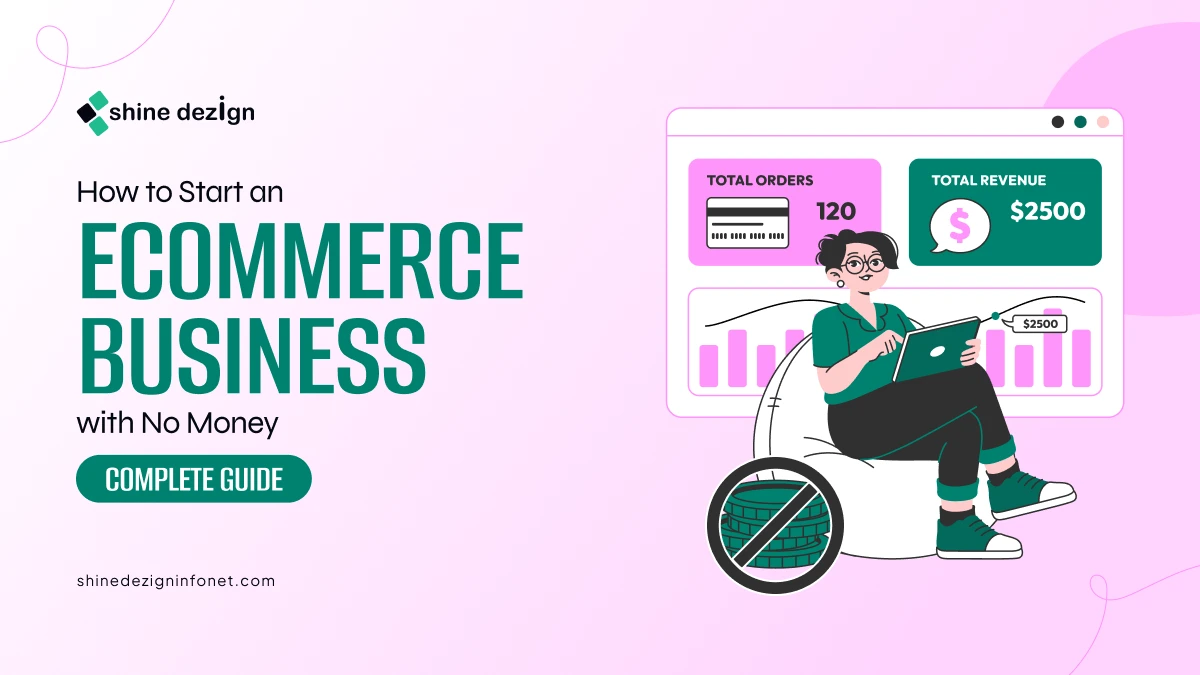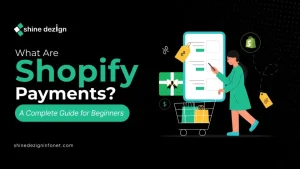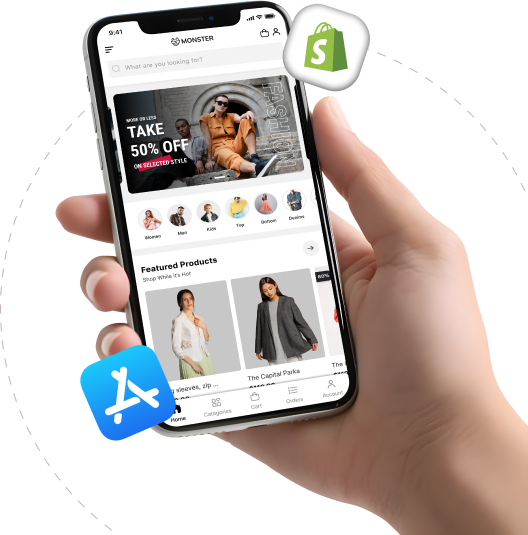Table of Contents
It has never been easier to start an eCommerce business without any initial investment. With the advent of new business models & platforms, aspiring entrepreneurs can establish their online stores without the burden of inventory costs or hefty setup fees.
This blog will guide you through the steps to starting an online store with no money, focusing on time & effort rather than money.
How to Start an eCommerce Business with No Money?
 The eCommerce world has transformed manifold, with the assistance of dropshipping, print-on-demand sites, etc. Such models allow you to sell products without investing in inventory.
The eCommerce world has transformed manifold, with the assistance of dropshipping, print-on-demand sites, etc. Such models allow you to sell products without investing in inventory.
The internet is filled with opportunities, and it is now possible for anyone with a computer and internet to start a business. It is, nevertheless, necessary to cultivate a mindset in which you will respect time and effort over money. Success in eCommerce requires dedication, innovation, & a willingness to learn.
1. Choosing the Ideal eCommerce Business Model
 Selecting the right business model is crucial for your eCommerce success. Each model has its unique advantages and challenges, and understanding these models will help you to align the strategies, strengths, and interests with the most suitable approach.
Selecting the right business model is crucial for your eCommerce success. Each model has its unique advantages and challenges, and understanding these models will help you to align the strategies, strengths, and interests with the most suitable approach.
Dropshipping: Dropshipping is among the popular models whereby you sell products directly from suppliers with no inventory. Once the customer orders, the supplier directly sends the product to the customer. This model lowers risk & eliminates the need for upfront investment in stock.
Print-on-Demand (POD): With print-on-demand, you can create products like T-shirts, mugs, & phone cases. You only pay for the product after a sale is made, & you can offer customized products without paying upfront.
Affiliate Marketing: Affiliate marketing is the process of selling other companies’ products & receiving a commission for every sale generated through your affiliate link. This is an investment-free model that can be an excellent method of monetizing your online visibility, allowing you to start an eCommerce business with no money while monetizing your online presence.
Digital Products: Marketing digital products like eBooks, courses, or templates can be extremely lucrative. As there is no physical product, your only expenditure is the time it takes to create the product.
Handmade & Craft Sales: If you are good at making things, sell handmade goods on Etsy or through social media. You can start at no cost or little cost with materials you already have.
Freelance Services: If you are knowledgeable in graphic design, writing, or consulting, you can offer services online. Websites like Fiverr & Upwork allow you to get clients without paying anything in advance.
2. Sourcing Products to Sell Without Investment
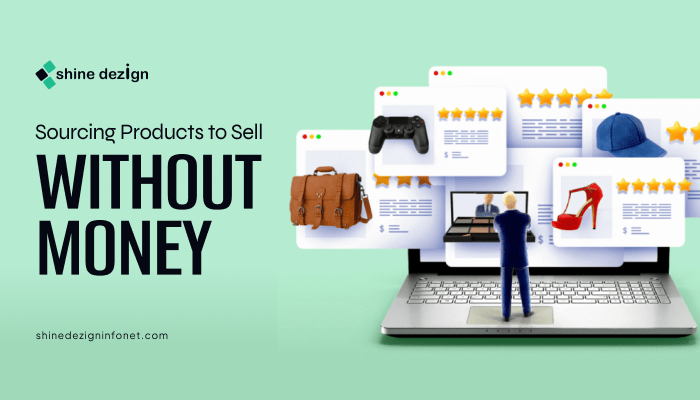 Finding the right products to sell is essential for your e-commerce business. This section explores various avenues to source products without any upfront investment, allowing you to start selling quickly and effectively.
Finding the right products to sell is essential for your e-commerce business. This section explores various avenues to source products without any upfront investment, allowing you to start selling quickly and effectively.
Dropshipping Suppliers: Platforms like AliExpress, Spocket & Zendrop provide products for dropshipping. You can browse their catalogs & select products to sell without any upfront cost.
Print-on-Demand Platforms: Services like Printful, Teespring & Redbubble allow you to create & sell customized products without inventory. You pay for the product only after a sale is made.
Affiliate Programs: Join affiliate programs such as Amazon Associates, ShareASale, or CJ Affiliate to market products & earn commissions. Most such programs provide marketing materials to help you get started.
Digital Product Ideas: Consider creating digital products such as Canva templates, Notion planners, or eBooks. You can market them on your website or through websites such as Gumroad.
Sourcing Free Samples: Get in touch with local businesses or manufacturers & request free samples of their products. This can be utilized to fill your inventory without any initial cost.
3. Building Your Online Store for Free
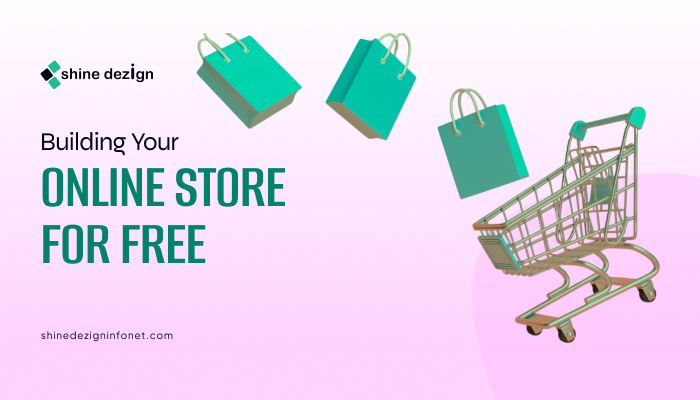 Creating an online store doesn’t have to be expensive. This section outlines various methods to establish your eCommerce presence without incurring significant costs.
Creating an online store doesn’t have to be expensive. This section outlines various methods to establish your eCommerce presence without incurring significant costs.
Free eCommerce Sites: Utilize free sites like Etsy, eBay, or Facebook Marketplace to build your online store. These platforms already have built-in traffic, helping you start an eCommerce business with no money while testing your niche.
Free eCommerce Sites: Utilize free sites like Etsy, eBay, or Facebook Marketplace to build your online store. These sites have their own traffic, making it easy to access potential customers.
Low-Cost Website Builders: If you would prefer a standalone site, find a cheap website builder like Shopify (free trial) or WooCommerce with WordPress. They offer simple-to-use interfaces to set up your store.
Selling on Social Media: Make use of social media sites like Instagram Shops, Pinterest & TikTok to showcase your products. These platforms allow you to reach lots of people at no expense.
Using Free Tools: Utilize free services like Canva for branding & Google Analytics to track your store’s performance. These can allow you to create a professional online presence without spending money.
4. Marketing Your eCommerce Business for Free
 Effective marketing is a key to driving traffic and sales. This section provides strategies to promote your eCommerce business without incurring advertising costs.
Effective marketing is a key to driving traffic and sales. This section provides strategies to promote your eCommerce business without incurring advertising costs.
Organic Social Media Marketing: Engage with your followers on social media networks like Instagram, TikTok, Pinterest & YouTube. Create quality content that resonates with your target market to drive traffic to your store.
SEO for Free Traffic: Use SEO strategies to render your website search engine friendly. Blogging, keyword optimization, and Pinterest SEO can bring you organic traffic at no cost.
Email Marketing: Build an email list using free tools like Mailchimp. Newsletters & promotional emails to subscribers keep them interested & coming back for more.
Influencer & Community Collaborations: Collaborate with micro-influencers or become a member of community groups within your niche. Such partnerships have the potential to introduce you to new followers without advertising costs.
Leveraging Free Listings: Take advantage of free listing sites like Google Shopping, Craigslist & local classifieds. These websites have the potential to introduce you to potential customers within your niche or locality without spending any money on advertising.
5. Low-Cost Scaling
 Once your e-commerce business starts gaining traction, it is essential to think about scaling. This section discusses strategies to grow your business while keeping costs low.
Once your e-commerce business starts gaining traction, it is essential to think about scaling. This section discusses strategies to grow your business while keeping costs low.
Reinvest Initial Profits in Advertising: As soon as you begin generating sales, look at reinvesting your earnings into paid advertisements. Facebook & Google Ads are platforms that will enable you to reach more viewers & get additional traffic to your store.
Automating Processes: Leverage free applications such as Trello for project management & Zapier for automating tasks that you repeat over time. Automation can help you save time & simplify your processes, enabling you to concentrate on developing your business.
Growing Product Lines According to Best-Sellers: Monitor your sales data to identify best-selling products. Use the data to build product lines, developing complementary products or product variations that will attract more customers.
Building a Brand for Long-Term Success: As your business grows, focus on creating a strong brand identity. Spend time creating a consistent brand image, for example, your logo, website, & promotional materials. A strong brand can allow you to create customer loyalty & set you apart from the rest.
6. Common Challenges & How to Overcome Them
 Every entrepreneur faces challenges, especially in the early stages of their eCommerce journey. This section highlights common obstacles and their solutions to make your e-commerce business smooth.
Every entrepreneur faces challenges, especially in the early stages of their eCommerce journey. This section highlights common obstacles and their solutions to make your e-commerce business smooth.
Managing Customer Service Without a Team: In the beginning, you may be doing customer service on your own. Create an FAQ section on your website to handle common questions & investigate the utilization of chatbots to answer immediately. As your business grows, you can hire virtual assistants to help manage customers.
Handling Shipping & Returns: If you are dropshipping, work closely with your suppliers to ensure smooth shipping & return processes. Clearly communicate shipping times & return policies to your customers to manage their expectations.
Staying Motivated with Slow Initial Sales: It is common for new eCommerce businesses to experience sluggish sales at the start. Continue to motivate yourself by setting small, achievable targets & celebrating your victories. Engage with your social media followers & continually tweak your marketing strategies to raise awareness.
Summing Up
Starting an eCommerce business with no money is not only a possibility but also an excellent option for potential entrepreneurs. With the right business model, the right products to market, building your store with no expense, & the right marketing techniques, you can build an online business successfully without putting yourself at any financial risk.
Always remember, it is all based on how hard you work, how innovatively you think, & how keenly you learn. The journey may be challenging, but with persistence & the right strategy, you can turn your dream into a reality.


